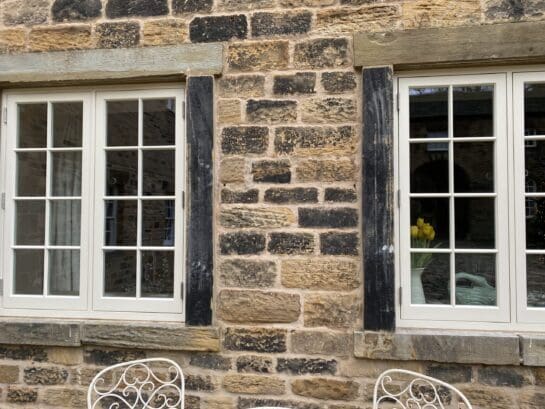
Slim Double Glazing Units – Should I use them?
Discover the pros and cons of slim double glazing units for heritage applications. While they aim to balance authenticity and energy efficiency, it’s crucial to understand the limitations they present. Explore the challenges associated with reduced sightlines and learn about the emergence of vacuum glazing as a promising alternative solution.
Slim double glazing is widely used for Heritage applications, but it has some problems
Slim Double glazing is basically any glass unit with an overall thickness of 14mm or less. The most common arrangement is two 4mm pieces of glass with a 4mm cavity. This is often the compromise solution for heritage and listed buildings where replacement windows are required to look as authentic as possible, but the homeowner wants to improve the energy performance of the windows over the previous single glazed windows. Unfortunately, slim double glazing units have some significant drawbacks which need to be considered.
What are the issues with Slim Double Glazing?
All IGUs placed on the into the UK market must be manufactured in accordance with all parts (1 to 6) of EN 1279. This is the harmonised Standard for all Insulating glass units or IGUs for short. The primary requirements of EN 1279 that we are concerned with in this piece dictate the durability and service life. These are:
Part 2 – Long term test method and requirements for moisture penetration
Part 3 – Long term test method and requirement for gas leakage rate and for gas concentration tolerances
High performance double glazing feature a warm edge spacer bar around the perimeter and a thick sealant layer. This provides an overall upstand of around 10mm and these units should comfortably pass the above tests. These large upstands cause a problem when you are glazing these units into the slim frames required for Heritage works.
As a result, some manufacturers of slim double glazing units cut down the warm edged spacer to 3mm and use only 2mm of sealant. Slim double glazing units with 5mm sightlines are specified by a number of local authorities to give a reduced visibility of the spacer bar, therefore giving more of a single glazed appearance, and to enable narrow pass-through glazing bars in multi-pane items. The problem is that the reduction of this sealant depth seriously jeopardises the IGU’s ability to resist moisture penetration and gas loss which in turn results in premature IGU failure.
The Glass and Glazing Federation (GGF) have now released a formal statement about slim double glazing with reduced sightlines. They are actively pursuing one supplier through trading standards. They have also promised to strike off any supplier offering these units from membership of their federation.
Vacuum Glazing as an Alternative
In recent years, a true alternative has entered the market place. Vacuum glazing is ultra slim, approximately half as thin as a Slim Double Glazing unit. VGUs also surpass thick triple glazing in terms of energy and (usually) acoustic performance. The thinner cavity (less than 1mm) in vacuum glazing also gives no double reflection and gives a truer replication of single glazing from the street. With the introduction of vacuum glazing, it is now possible to keep the client and conservation officer happy.